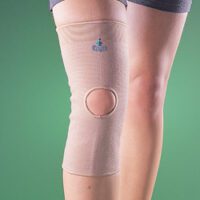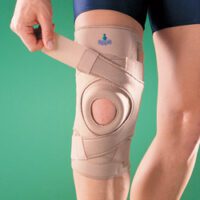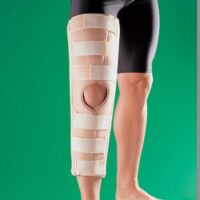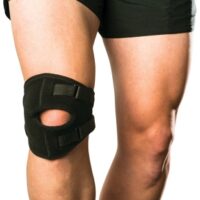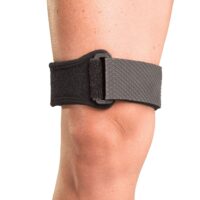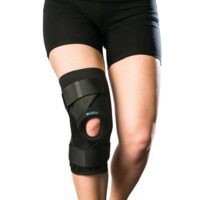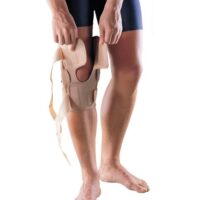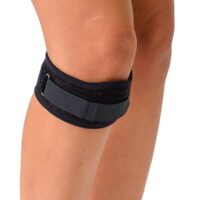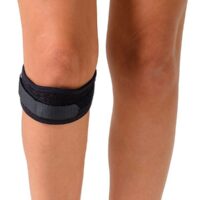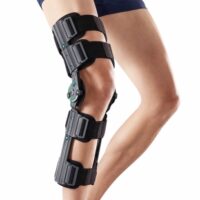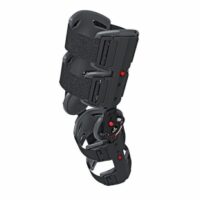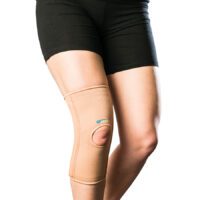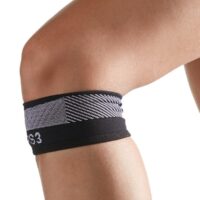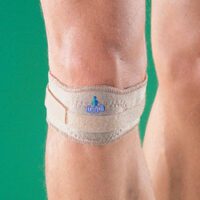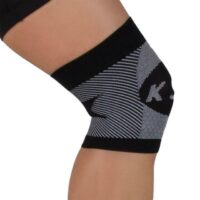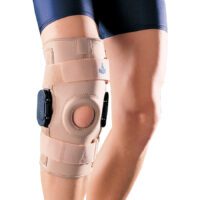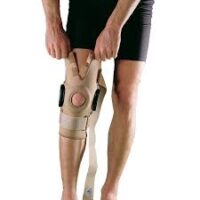Breaststrokers Knee
Article by John Miller

Breaststrokers Knee: Insights from a Physiotherapist
What is Breaststrokers Knee?
Breaststrokers knee, a prevalent injury in the swimming world, is especially common among swimmers who specialise in the breaststroke technique. This condition arises from the distinct and demanding movements required in the breaststroke’s kicking action.
The Unique Demands of the Breaststroke Kick
When performing the breaststroke, swimmers execute a unique combination of leg movements, involving specific patterns of bending, extending, and rotating the knees. This series of actions places unusual stress on the knees, particularly on the medial compartment.
Stress and Strain on the Medial Compartment
The breaststroke kick, characterised by its whip-like motion, requires a swimmer to exert force differently from other swimming strokes. This involves simultaneous outward and backward movement of the legs, propelling the swimmer forward while subjecting the knees to twisting and sideways forces.
The breaststroke kick involves complex movements like abrupt flexing, extending, adducting, and externally rotating the knee against water resistance. This action leads to significant stress on the knee, especially on the medial side.
Vulnerability and Repetitive Stress
The medial compartment of the knee, including structures like the medial collateral ligament and the medial meniscus, is particularly vulnerable to these forces. Repetitive application of these forces during training can lead to the development of breaststrokers knee.
Beyond Pain: Understanding Mechanical Stresses
This condition highlights the mechanical stresses and biomechanical challenges faced by competitive swimmers. It underscores the importance of proper technique, strength, and flexibility in the legs, especially the knees.
Prevention and Treatment
Understanding the mechanics of breaststrokers knee is crucial for prevention and treatment. This requires knowledge of the breaststroke technique and awareness of the body’s responses to this swimming style’s unique demands.
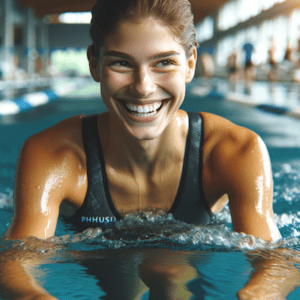
The Role of Swimmers, Coaches, and Healthcare Professionals
This understanding is vital not only for swimmers but also for coaches and healthcare professionals, such as physiotherapists, who work to prevent and manage such injuries. Recognising the signs early and adopting preventive measures can help swimmers continue to enjoy their sport while minimising injury risk.
Identifying Symptoms and Effects
Swimmers with breaststrokers knee often report a range of symptoms, including pain in the medial knee, ligament sprains, irritation of the medial plica, and bursal irritation at muscular insertions.
The Role of Overuse
Overuse is the primary cause of breaststrokers knee. The repetitive nature of the breaststroke kick places continuous stress on the knee, leading to the development of these symptoms.
Effective Treatment Strategies
When it comes to treatment, a comprehensive approach is essential. Treatment typically includes rest, ice, compression, and elevation (RICE), along with specific exercises and technique modification.
Prevention: Key to Longevity in Swimming
Prevention is crucial. Regular check-ups with a physiotherapist, proper warm-up routines, and technique refinement can significantly reduce the risk of developing breaststrokers knee.
Other Knee Issues in Swimmers
Apart from breaststrokers knee, swimmers may face other knee-related issues like anterior knee pain or patellofemoral pain syndrome, often treatable with effective physiotherapy.
The Benefits of Physiotherapy for Breaststrokers Knee
Strengthening and Flexibility
Physiotherapy addresses the root cause of the pain through targeted exercises that enhance knee stability and flexibility.
Technique Modification and Injury Prevention
Physiotherapists provide guidance on technique modification, crucial for reducing stress on the knees in breaststroke swimmers.
Education and Body Mechanics
Physiotherapy sessions offer education on body mechanics and injury prevention, empowering swimmers to understand their bodies better.
Conclusion and Next Steps
In conclusion, breaststrokers knee is a significant concern for breaststroke swimmers. Early recognition of symptoms and consultation with a physiotherapist are crucial for effective treatment and prevention.
What to Do Next?
If you’re experiencing knee pain related to swimming, consult with a physiotherapist for a detailed assessment and personalised treatment plan.
Related Articles
- Effective Swimmers Shoulder Treatment and Prevention: This article offers a comprehensive guide to understanding, treating, and preventing shoulder pain commonly experienced by swimmers, known as “Swimmers Shoulder”.
- Swimmers Back: Essential Guide To Lower Back Pain: It delves into the causes, symptoms, and management of back pain specifically related to swimming, a condition often referred to as “Swimmer’s Back”.
- Swimming Injuries: Insights And Physio Tips: This article provides an overview of common swimming injuries, covering a range of conditions including shoulder, knee, back, and more. It’s a valuable resource for understanding the broad spectrum of injuries associated with swimming and offers tips for treatment and prevention.
- Knee Ligament Injury – Physiotherapist Guide & Tips – This article covers a broad range of knee ligament injuries, offering valuable information on diagnosis and treatment.
- Effective MCL Sprain Treatment and Prevention Tips: This resource will be valuable for readers seeking a deeper understanding of MCL injuries and their management.
- Management of Popliteus Tendinopathy – Provides understanding on managing tendon issues around the knee, which is crucial for individuals experiencing similar symptoms as Breaststrokers Knee.
- Patellar Tendinopathy – Discusses the condition and treatment of patellar tendon issues, a common concern for athletes and relevant for those seeking comprehensive knee care.
- Pes Anserinus – Offers insights into another knee condition that could be mistaken for Breaststrokers Knee, helping readers distinguish between different knee issues.
- Meniscus Tear – Details about meniscus tears, another common knee injury that could provide additional context or comparisons to Breaststrokers Knee.
- Patellofemoral Pain Syndrome (PFPS) – Explores another type of knee pain, enhancing the reader’s understanding of different knee conditions.
Knee Pain Causes
A Comprehensive Guide
Knee pain is often a symptom of underlying issues ranging from acute injuries to systemic health conditions. Identifying knee pain causes is essential for effective treatment. This guide offers an overview of potential culprits, providing a pathway to understanding and addressing your knee discomfort.
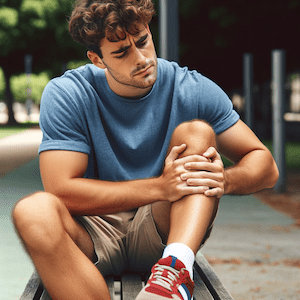

Knee Ligament Injuries
Ligament injuries, such as ACL and PCL tears, are significant knee pain causes. They can lead to instability and severe discomfort, requiring prompt medical evaluation.
- ACL Injury
- PCL Injury
- MCL Sprain
- LCL Sprain
- Posterolateral Corner Injury
- Superior Tibiofibular Joint Sprain
- Symptoms of a Torn Ligament
- Walking with a Torn Ligament
ACL Injuries
An ACL injury is a common sports-related knee injury that can lead to long-term knee pain and require surgical intervention.
- Is Surgery Needed?
- Living Without an ACL
- Main Function of the ACL
- Untreated ACL Injury
- Symptoms of an ACL Tear
- Diagnosing an ACL Tear
- Best Surgery for ACL Tear
- Post-ACL Reconstruction Rehabilitation
Knee Meniscus Injuries
Meniscus tears, often caused by twisting or turning quickly, are prevalent knee pain causes, with treatment options varying based on severity.
Kneecap Pain
Pain in the kneecap can arise from various conditions, affecting your ability to engage in daily activities comfortably.
- Chondromalacia Patella
- Fat Pad Syndrome
- Patella Dislocation
- Patellofemoral Pain Syndrome
- Patellar Tendinopathy
- Quadriceps Tendinopathy
- Osgood Schlatter’s Disease
- Sinding Larsen Johansson Syndrome
Knee Arthritis
Arthritis is a leading cause of knee pain, particularly in older adults, with symptoms that can significantly impair quality of life.
Knee Tendon Injuries
Tendon injuries can result from overuse or sudden, high-impact activities, contributing to ongoing knee pain.
Muscle Injuries
Muscle strains and related conditions are common knee pain causes, especially among athletes and active individuals.
- Corked Thigh
- Thigh Muscle Strain
- Hamstring Strain
- ITB Syndrome
- Popliteus Syndrome
- Muscle Strain
- Muscle Cramps
- DOMS – Delayed Onset Muscle Soreness
Knee Bursitis
Inflammation of the bursae can cause significant knee pain, often requiring targeted treatment to reduce symptoms.
Children’s Knee Conditions
Young athletes can experience specific knee conditions related to growth and activity levels.
Other Knee-Related Conditions
Various other conditions can lead to knee pain, necessitating a broad understanding of potential knee pain causes.
- Baker's Cyst
- Runner’s Knee
- Reducing Knee Stress for Runners
- Plica Syndrome
- Fibromyalgia
- Stress Fracture
- Overuse Injuries
- Restless Legs Syndrome
Knee Surgery
In some cases, surgical intervention may be the best option to address certain knee pain causes effectively.
Seek Professional Advice
For tailored information regarding your knee pain, consult a healthcare professional with experience in knee conditions, such as a knee physiotherapist, sports physician or knee surgeon. They can provide a personalised assessment and treatment plan to address your specific needs.
Knee Pain Products & FAQs
A variety of products can support knee pain management. Browse our selection and read our FAQs to learn more about how to alleviate knee discomfort. More info: Knee Pain Products & FAQs
With this guide, you’re better equipped to understand the various knee pain causes and take the first step towards recovery. Remember, early intervention by a skilled physiotherapist can significantly improve your outcomes and assist in returning you to a pain-free, active lifestyle.
Knee Pain FAQs
Knee pain is a widespread issue, impacting individuals of varying ages and lifestyles. Causes range from injuries and wear and tear to conditions like arthritis. This FAQ section aims to provide insights into knee pain, covering diagnosis, ligament issues, ACL injuries, meniscal injuries, age and arthritis concerns, and pain relief methods through exercise and treatment.
Feel free to click on the questions to for deeper discussions into each topic.
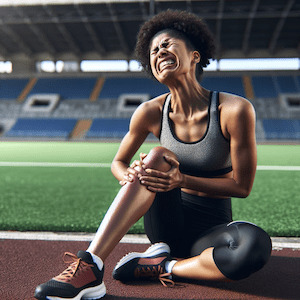

Diagnosis Related
How Can I Determine If My Knee Injury Is Serious?
- Learn to assess the severity of your knee injury based on symptoms and situations.
How Can I Identify The Type Of Knee Injury I Have?
- Discover how different knee injuries manifest and what signs to look for.
When Should I Seek a Physiotherapist or Doctor for My Knee Injury?
- Find out the right time to consult professionals for your knee concerns.
Is Knee Clicking a Sign of a Serious Condition?
- Understand what knee clicking indicates about your joint health.
When Should I Consider Getting a MRI for My Knee?
- Learn about the circumstances when an MRI becomes necessary.
Why Has My Knee Suddenly Started Hurting?
- Explore potential reasons behind sudden knee pain.
Why Does My Knee Hurt On The Inner Side?
- Identify causes of inner knee pain and when to seek help.
Knee Ligament Related
What Are The Common Symptoms of a Torn Ligament in the Knee?
- Recognise the signs of a torn knee ligament.
Can I Walk With A Torn Ligament In My Knee?
- Understand the feasibility and risks of walking with a torn ligament.
ACL Related
What are the Consequences of Not Getting Surgery for an ACL Injury?
- Learn about the long-term effects of untreated ACL injuries.
What Are The Symptoms Of An ACL Tear?
- Identify the key signs of an ACL tear.
Meniscus Related
Is Surgery Necessary for a Meniscal Injury?
- Discover when surgery is essential for meniscal injuries.
Can a Torn Meniscus Heal Without Surgery?
- Find out if meniscal tears can heal naturally.
Age & Arthritis Related
At What Age Do Knee Problems Typically Begin?
- Learn about the onset age for common knee problems.
What are the Common Symptoms of Arthritis in the Knee?
- Identify arthritis symptoms in the knee.
Running Related
What are Some Ways that Runners Can Reduce Knee Stress?
- Explore methods for runners to minimise knee stress.
Knee Treatment & Exercise Related
Is Walking Good For Knee Pain?
- Understand the benefits of walking for knee pain.
What are Some Effective Ways to Relieve Knee Pain?
- Discover various methods to alleviate knee pain.
How Much Walking is Recommended for Individuals with Knee Pain?
- Learn the ideal walking duration for those with knee pain.



